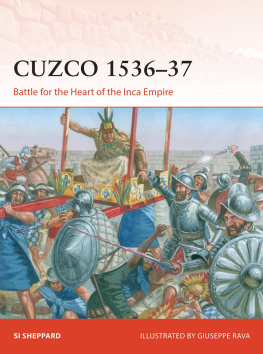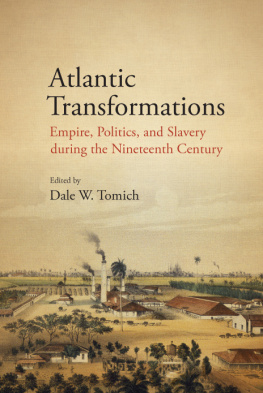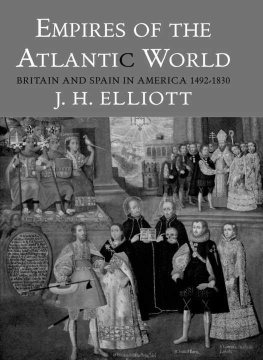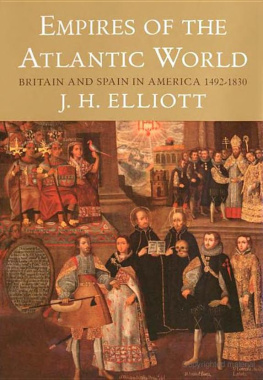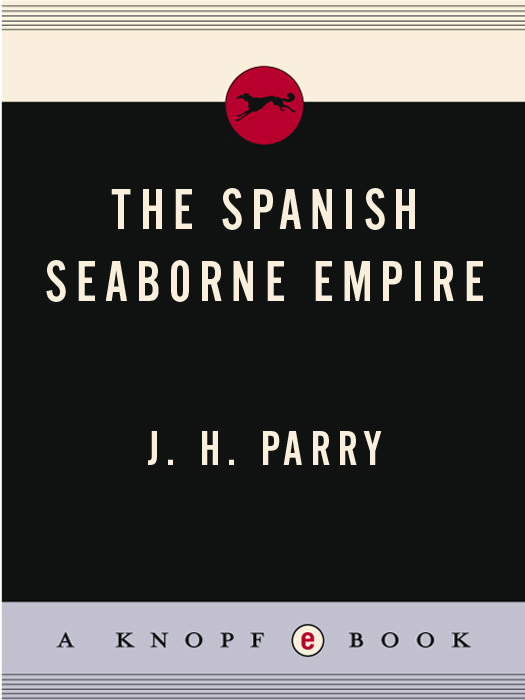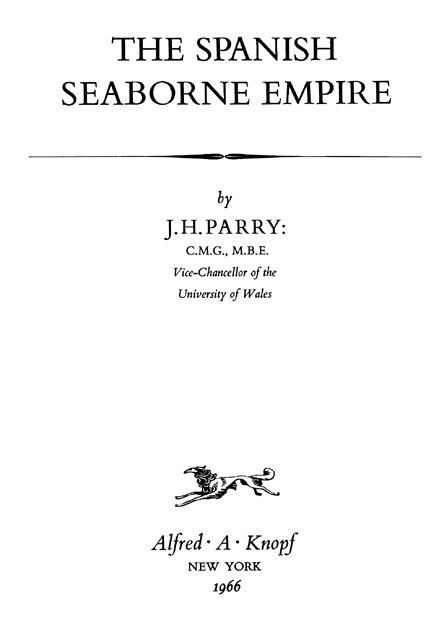This series will provide a picture of mans social lifeaccurate, vivid, readable, free from cosmic theories, concerned with the diversity of human experience, analytic yet evocative, and charged with that sense of reality which only the finest scholarship can create. Its aim will be twofoldto bring a full understanding of the societies they describe and to illustrate the growth of mans control over the physical universe.
THIS IS A BORZOI BOOK
PUBLISHED BY ALFRED A. KNOPF, INC.
FIRST AMERICAN EDITION
Copyright 1966 by J. H. Parry
All rights reserved under International and Pan-American Copyright Conventions.
Distributed by Random House, Inc.
Library of Congress Catalog No: 6610754
eISBN: 978-0-307-82285-7
v3.1
Preface
The book which follows is an attempt to summarise the growth of the Spanish Kingdoms in the Americas, and the interactions between those kingdoms and metropolitan Spain, from the late fifteenth century to the early nineteenth. The volume of writing on the subject is immense; but even so our understanding of it remains uneven and our knowledge of some aspects, at least, is slight. An author who tries to tell, even in outline, the story as a whole, must rely heavily on the help of friends and specialised colleagues. In a short Preface I can acknowledge only my most pressing debts. I wish particularly to thank Dr Woodrow Borah for much illuminating talk about the Indians of New Spain; Dr Neil MacKay for information, so far unpublished, about eighteenth-century Buenos Aires; and Dr David Brading for valuable details, also as yet unpublished, on colonial local government and finance, particularly in the mining areas of New Spain. They and many others supplied me with information: if I have misinterpreted it the fault is mine. Dr Holden Hall of the Newberry Library and Dr. Helen Wallis of the British Museum gave me patient and expert help in the search for illustrations. Finally I should like to thank those who helped with manuscript, proofs and index: my wife, my daughter Katherine, and Miss Harriet Rees.
J. H. P.
Swansea
Contents
Illustrations
following
a. Machu Picchu
b. Inca masonry with Spanish colonial houses superimposed
A Maya calendar stone at Copn, Honduras
a. The temple known as El Castillo, at Tulum in Yucatn.
b. Aztec weapons
a. Indians washing for gold
b. Gold-mining in sixteenth-century Hispaniola
A sugar mill in sixteenth-century Hispaniola
A view of Seville in the sixteenth century
A view of Cdiz in the sixteenth century
The port of Cdiz in 1727
Drawings from the Codex Telleriano-Remensis
Rural life in sixteenth-century New Spain
Title page of the Doctrina Breve
a. The Church of Santa Prisca in Taxco
b. The Torre Tagle palace in Lima
Colonial town-planning: the city of La Plata
a. The great plaza of Mexico City
b. A cable bridge of the Inca type
Maps
Introduction
BY J. H. PLUMB
I
O VER the last fifty to a hundred years, mans belief that the historical process proved that he was acquiring a greater mastery over nature has received a brutal buffeting. In his early youth H. G. Wells, a man of vast creative energy, of rich delight in the human spirit, and of all-pervading optimism, viewed the future with confidence; science, born of reason, was to be humanitys panacea. When, in the years of his maturity, he came to write his Outline of History, his vision was darker, although still sustained with hope. World War I, with its senseless and stupid slaughter of millions of men, brought the sickening realisation that man was capable of provoking human catastrophes on a global scale. The loss of human liberty, the degradations and brutalities imposed by fascism and communism during the twenties and thirties, followed in 1939 by the renewed world struggle, these events finally shattered Wellss eupeptic vision, and in sad and disillusioned old-age he wrote Mind at the End of its Tether. His hope of mankind had almost vanished. Almost, but not quite: for Wellss lifetime witnessed what, as a young writer, he had prophesiedtechnical invention not only on a prodigious scale but in those realms of human activity that affected the very core of society. And this extraordinary capacity of man to probe the complexities of nature and to invent machinery capable of exploiting his knowledge remained for Wells the only basis for hope, no matter how slender that might be.
If the belief of a man of Wellss passionate and intelligent humanism could be so battered and undermined, it is not surprising that lesser men were unable to withstand the climate of despair that engulfed the Western World between the two world wars. The disillusion of these years is apparent in painting, in music, in literatureeverywhere in the Western World we are brought up sharply by an expression of anguish, by the flight from social and historical reality into a frightened, self-absorbed world of personal feeling and expression. Intellectual life, outside science, has pursued much the same course as artistic life, although it has shown greater ingenuity and a tougher-minded quality. Theology, philosophy and sociology have tended to reduce themselves to technical problems of exceptional professional complexity, but of small social importance. Their practitioners have largely ceased to instruct and enliven, let alone sustain the confidence of ordinary men and women.


